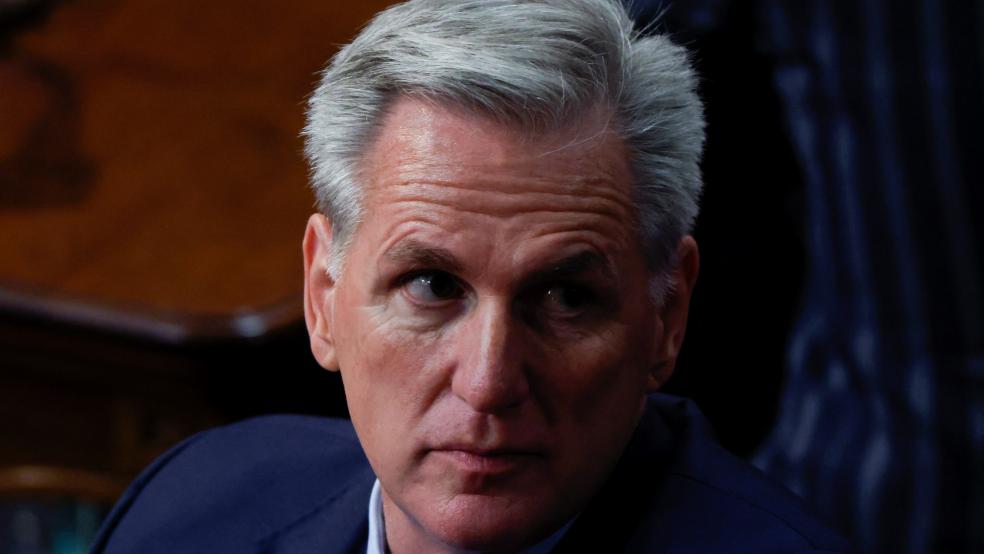The debt-limit fight now heating up between House Speaker Kevin McCarthy (R-CA) and President Joe Biden is reminiscent of battles fought 10 and 12 years ago — only McCarthy may be staking out an even more aggressive position.
Back in 2011, when a Democratic president and congressional Republicans were embroiled in a previous showdown over raising the debt ceiling, House Speaker John Boehner set a requirement that any increase in the government’s borrowing limit should be matched or exceeded by the amount of spending cuts.
“Without significant spending cuts and changes to the way we spend the American people’s money, there will be no debt limit increase,” Boehner told the Economic Club of New York in a May 2011 speech similar to one that McCarthy gave this week at the New York Stock Exchange. “And cuts should be greater than the accompanying increase in debt authority the president is given.”
That dollar-for-dollar standard became known as the “Boehner Rule.” Then-Sen. Rob Portman (R-OH) laid out the rationale in a 2011 piece for The Wall Street Journal arguing that the rule should be made permanent: “If we pledge to hold all future debt-limit increases to the same ‘dollar-for-dollar’ standard, we can balance the budget within a decade.”
But Republicans shifted away from the rule during another debt-limit fight in 2013. Boehner early on told reporters that “dollar for dollar is the plan,” but Republicans later dropped the idea, shifting their emphasis from discretionary spending cuts to the mandatory side of the budget. "Dollar for dollar is difficult," Rep. Tom Price said at the time. "The discretionary spending itself is $1 trillion a year, and if you're running a $1 trillion deficit annually, it's tough to find the savings solely in discretionary spending to match the increase in debt-limit."
By February 2014, Boehner’s Republicans had given up entirely on extracting a price for a debt limit increase, relying on Democrats in the minority to help lift the ceiling. “The ‘Boehner Rule’ died today,” said ABC News. And Politico explained: “The sharp shift in tactics within the House and Senate GOP caucuses reflects a hardening realization after three years of partisan brinkmanship over the budget: Fighting over the debt in a crisis-like atmosphere is a political loser.”
That lesson was not embraced in all corners of the party. Boehner consistently struggled to wrangle the most conservative members of his conference, who pressured him to push for deeper spending cuts and more aggressive negotiating stances in taking on a Democratic president. He ultimately resigned in 2015 under pressure from his right flank.
McCarthy has faced similar pressures. But where the Boehner rule called for dollar-for-dollar parity in debt increases and spending cuts, McCarthy has heeded the demands of the far-right members who hold leverage over the current, narrow House GOP majority. The plan he released this week calls for about $4.5 trillion in spending cuts in exchange for about $1.5 trillion in borrowing authority, or enough to get the government through March 2024, whichever comes first. That’s a 3-to-1 ratio, in line with some conservative demands dating back a decade or more.
Still, some Republicans insist the plan doesn’t go far enough and are reportedly pushing for stricter work requirements for food stamps, for example. And some of McCarthy’s conservative members insist this plan isn’t just an opening offer in talks with Biden — it’s their only offer. So even if McCarthy can get 218 votes for the plan in the House, his support among hardliners could crack after the Senate and White House wind up engaged in dealmaking. Or if Democrats hold fast to their insistence that they won’t negotiate, we may find out that partisan brinkmanship could cost a lot more jobs than just the speaker’s.





